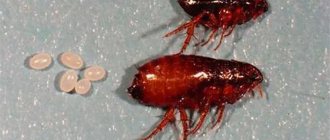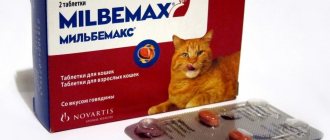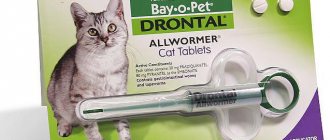Fleas are ectoparasites that are often found in dormitories, change houses and in rooms with unsatisfactory sanitary conditions. They spend most of their time on the host's body, feeding on blood. Ectoparasites attack cats, dogs, farm animals, and rodents. But sometimes annoying individuals appear in the apartment, annoy the residents, cause discomfort, and interfere with peaceful rest and sleep.
In a person's home you can find earthen fleas, bed fleas, and sand fleas. Choosing one owner, they easily change it to another. That is, a flea can jump from a cat or dog to a person. These are small bugs measuring 1-5 cm that are capable of jumping long distances. Getting rid of fleas on your own is extremely difficult due to their small size and secretive lifestyle. But the main obstacle in the fight is the high resistance of parasites to negative external factors. They easily withstand changes in temperature and humidity and are capable of entering into suspended animation if necessary. Next, we’ll look at how to quickly and permanently get rid of fleas in an apartment, prevent their reappearance, and create a protective barrier.
What to do if you find fleas
If you find even one flea on your dog, you need to act as follows.
Life cycle of fleas
- Do not delay treatment - fleas multiply at high speed. It will only take a few days for the pet to stop sleeping and eating, and for the insects to penetrate into all surrounding objects. It will be much more difficult to get them out of there than with a dog. In addition, in this case, there remains a high risk of re-invasion.
- Take a comprehensive approach to eliminating parasites. In addition to the pet, you will have to treat the room in which he lives (in the case of the street, this is an enclosure, a booth, everything that is in them). To ensure that you get rid of bloodsuckers, you will need to use not only folk, but also industrial pest control products.
- The drug for treating your four-legged friend must be selected in accordance with its characteristics, for example, age, attitude to washing, and state of health. Ideally, you should consult a veterinarian, but advice from people who have already encountered such a situation and successfully overcome it is also acceptable.
- During the period of disinfestation measures, the dog must be in “quarantine” - it is worth limiting it from free walking and communication with unfamiliar relatives.
Causes of parasites
The first reason that comes to mind for insects is dogs and cats. Indeed, most often it is pets who become the source of infection. But there are many other ways to bring bloodsuckers into your home.
- Basement of the house. Fleas in the basement of an apartment building both quickly appear and quickly begin to multiply. Residents of the first floors suffer from them especially.
- Shoe sole. Sometimes people themselves bring eggs of earthen species to their homes on the soles of their shoes. And they cannot always be detected immediately. Parasites are usually noticed when they have already actively begun to reproduce.
- Rent or sale of an infected apartment. Apartment owners may not completely get rid of pests before selling or renting. If you are unlucky enough to encounter such hosts, prepare for a long and persistent struggle with insects.
- Neighbours. It happens that not the most clean neighbors contribute to the spread of parasites not only in their apartment, but throughout the house.
Having discovered an infestation of blood-sucking insects, it is advisable to find out where they came from, otherwise all efforts to destroy them will be in vain.
Of course, the main reason why parasites linger in your home is the presence of favorable conditions. Lack of fresh air, uncleanliness, dirt in the house, dampness, clutter - all this contributes to their active reproduction.
Flea
Indoor fleas feed on blood, so the inhabitants of the house become an excellent source of food for them. This is the main danger, because they can carry various dangerous, sometimes even fatal diseases, as well as helminth eggs.
Pests leave painful bites. The skin at the bite sites is irritated and itchy, and the points themselves are located on the same line. Sometimes bites can cause severe allergies, especially in children.
Industrial means for removing fleas
At the moment, there is a huge range of products that can be used to remove fleas from a dog. However, for all their effectiveness, each of them has only a temporary effect, because these parasites are widespread everywhere. As soon as the treatment ends, the flea may appear again. Therefore, you need to know what you can do to prevent an invasion, how to quickly get rid of insects, and how to maintain the result in the future.
Shampoos
Washing the dog
Shampoos help remove fleas from dogs only if there are a minimum number of them; as the insects multiply, this type of treatment completely loses its effectiveness. Products containing insecticides, such as permethrin, help get rid of parasites. However, this component can cause an allergic reaction, the signs of which are: excessive salivation and vomiting.
There are also products for disinfestation of dogs with natural ingredients. Plant extracts have an antipruritic, anti-inflammatory, healing effect, and keep your pet's hair in a healthy condition. After applying flea shampoo to the dog, carefully distribute it over the body (avoiding contact with the eyes, nose and mouth), leave for a while (according to the instructions), and rinse. After drying, it is recommended to comb the dog with a fine-toothed comb.
Among the most popular shampoos for fleas on dogs are: Mr. Bruno, Bars, Phytoelite.
Flea shampoo Mr. Bruno
Shampoo Bars for fleas
Shampoo Phytoelite for fleas
Drops
Applying flea drops
You can quickly get rid of blood-sucking parasites from your four-legged friend at home using drops. This option is more effective than the previous one, and therefore enjoys deserved popularity. The effect of the contents of the bottle lasts for about a month (provided that the instructions are followed).
The drops are applied to the dog’s skin in a place that is inaccessible to licking (most often the scruff of the neck). The active ingredient is toxic to bloodsuckers; it penetrates the animal's epidermis and bloodstream, resulting in the elimination of insects. However, before removing fleas from a dog with drops, you need to consult a veterinarian, since the active ingredients have side effects and contraindications.
Among the drops we can note: Bars Forte, Celandine, Barrier, Frontline.
Bars Forte
Celandine
Collar
Using a collar to remove fleas from a dog, although convenient, presents certain difficulties.
This method is not suitable for puppy-aged pets, expecting dogs or nursing dogs, since the insecticides with which the collar is impregnated can have a negative effect on the puppies' body. Collars containing natural substances, as well as ultrasonic ones, are safer. At the same time, the latter option is too expensive, and natural ingredients are not effective against heavy flea infestations. Another drawback of flea collars is that poisonous compounds are distributed unevenly throughout the body. In addition, the product is not recommended to be used simultaneously with other methods.
Sprays
Flea spray for dogs
You can remove fleas from your dog using a spray. This form of processing has gained popularity due to its ease. It is enough to apply the product to the fur in the pet’s neck area, after which the parasites will remain on the animal for at least 3-4 weeks.
The disadvantage of using a spray to combat fleas is the high content of toxic substances in the composition. The contraindications are the same as for the collar. There is also a possibility of licking off the drug if it gets on other parts of the body.
Frontline is considered the most effective tool in this group; Bars and Beafar aerosols are no less popular among dog breeders.
Powder
An insecticidal remedy for fleas on dogs in powder form has not found significant distribution among dog breeders. This is due to the need to rub the product with your hands into the skin and hair of the animal. In addition, the use of this processing method increases the risk of poisoning. Powders are not used when it comes to puppies, pregnant dogs, lactating dogs and weakened ones.
Among the powdered preparations we can highlight: Sanal, Insectal.
Pills
The tablet form of flea control also did not catch on among dog owners. Chewable tablets slightly reduce the number of parasites, but do not remove them completely. In addition, this method of disinsection is dangerous due to poisoning and allergies. Treatment consists of adding the drug to the animal’s feed.
Veterinary pharmacies offer drugs such as Comforts, Capstar.
Table: prices for the products presented in the article
| Product name | approximate cost |
| Pyrethrum | 200–500 rubles (this gap is due to the relative rarity of the product in some cities) |
| Phenaxin | 30–45 rubles |
| Fas-Double | 150 rubles |
| Raptor | 275 rubles |
| Clean house | 200 rubles |
| Bolfo | 400–500 rubles |
| Delcid | 130 rubles |
Carbamic acid derivatives
Among carbamic acid derivatives there are such well-known substances as thiophos, kroposkur and dichlorvos. The principle of action is to block the protein receptors of insect nerve cells.
Folk remedies for fleas on dogs
An alternative to industrial drugs is to remove fleas from dogs using folk remedies. They are generally effective if insects are present in small numbers. However, as a preventive and auxiliary remedy, folk methods are irreplaceable.
Flea head under a microscope
- Herbs. The most popular and effective plants that can repel fleas are: wormwood, tansy, eucalyptus, hellebore. The last option is sold in pharmacies and is the most powerful remedy; its use requires caution, since exceeding the recommended dose threatens severe intoxication of the animal’s body. Decoctions or infusions are prepared from the plants and used to bathe the dog. Using herbs is an excellent and safe way to get rid of fleas in puppies.
- Laundry soap. To rid your pet of blood-sucking insects, you need to make a solution from laundry soap. To do this, eucalyptus leaves are boiled in a separate container in advance. After cooling, add a little cedar (fir, pine, tea tree) oil and grated soap. The resulting liquid is used to wash the dog. It can be stored at room temperature.
- Garlic. Fleas cannot stand the smell of garlic, but during treatment you need to carefully monitor your pet - for dogs, this plant poses a danger (even death) if ingested. To prepare a medicinal solution, grind 2-3 cloves, add 200 ml of water, and leave overnight. The resulting liquid can be applied only to those areas of the body that the animal cannot lick.
- Onion. It works the same way as garlic. To treat a pet, finely chop the head, fill it with water, and add soap (preferably tar or laundry soap). After stirring, treat the animal’s fur with the solution.
- Apple vinegar. To get rid of bloodsuckers, generously moisten the dog’s body with an aqueous solution of apple cider vinegar and leave for 60 minutes, then rinse off and comb the hair well. To prepare, you will need one part vinegar and three parts water.
- Essential oils. Fleas are afraid of any strong odors, especially citrus, eucalyptus, pine, and tea tree esters. Oils are recommended for direct application to the dog's coat or adding to bathing water.
Soda
It is used in a similar way, but the difference with soda is that it acts on larvae and eggs. In combination with salt, these folk remedies destroy the visible and invisible stages of flea development. The method is inexpensive and safe even for children and pets. Moreover, every housewife has salt and soda, and their use does not require complex preparations.
A mixture of salt and soda is used to treat carpets, rugs, animal bedding and upholstered furniture on which a dog or cat periodically lies.
- Check the expiration date of baking soda: if there is no packaging left with the date, just add 2-3 drops of vinegar to a spoon with soda - if bubbles appear, then the soda is still good
- Mix baking soda and salt in equal proportions
- Apply the mixture evenly to the carpets using a brush or broom
- Leave the mixture overnight and vacuum up the next morning.
- Repeat the procedure every 4 days for two to three weeks.
How to remove fleas from puppies
It is more difficult to remove fleas from dogs of puppy age than from adults, since most of the products on the market are indicated for six months. Only a few drugs are approved for use:
- from 1.5 months - Bars and Stronghold in spray form, Celandine and Phytoelite shampoos;
- from 2 months – Celandine and Frontline in the form of drops, Beafar collar.
Before using these medications, you need to study the instructions to find out how to properly kill fleas and prevent poisoning of the puppy.
Note: the best option for puppies would be to use folk methods and remedies: tar soap, wormwood.
Is there a flea vaccination?
Flea spray for dogs
Many owners would like to have their pet vaccinated against fleas. As such, there is no flea vaccine. However, grafting is often referred to as insecticide injection. The injection acts like drops, but the effect can last up to six months. The mechanism of action of the vaccination is as follows: when bitten by an insect, it receives a dose of a toxic substance that causes a disturbance in the parasite’s nervous system, and then its death.
The positive aspects of flea injections for dogs include the simplicity of the method. To protect your pet from bloodsuckers, only a single injection is required. In addition, the possibility of the drug entering the animal’s gastrointestinal tract is completely eliminated, which means there is no risk of poisoning. An additional advantage is that the product is available in different versions, providing for the treatment of dogs of different ages and colors.
Not all dogs can receive flea injections. Injections are contraindicated for puppies under 2 months of age, weak pets, and people with allergies. You cannot vaccinate yourself - this must be done by a veterinarian after a preliminary examination of the dog. The most commonly used anti-flea vaccinations are: Lufenuron, Eprimek, Ivermectin.
Treating the area where the dog lives
To remove fleas from a dog, it is not enough to treat only the pet. The insects living next to it will return to the “host” as soon as the drug expires. Therefore, it is necessary to simultaneously carry out a thorough disinfestation of the premises (apartment, house, booth) in which the pet lives.
Treating your apartment for dog fleas
There are several ways to disinfect an apartment. You can use one, the most suitable one, or you can use several at once.
What do fleas look like on a dog?
- Thermal impact. If the temperature outside is sub-zero, it is enough to take the things in which fleas have settled outside for a few hours outside. Insects can also be killed by exposing them to boiling water (by dousing or boiling them).
- Chemical attack. Products such as Karbofos, Reid, Fenaxin and the like are used to treat floors, walls, corners, utility rooms, and large interior items (for example, upholstered furniture). You can use insecticidal preparations in the form of a spray or powder that were used to treat the dog. It is important that there is not a single untreated corner left, otherwise the processing will have to start all over again.
- Traditional methods. Among the folk methods for treating an apartment from dog fleas, the same means are used as for disinsection of a pet. These are: wormwood, kerosene, pine sawdust and others. Only kerosene treatment leads to the death of insects; other methods can be used as a complement to the chemical option. Infusions and decoctions are prepared from the plants, which are used to wipe all surfaces in the house, preferably several times a day. As an option, spread fresh wormwood around the apartment (along the baseboard, in corners, under furniture), and change it as it dries for a month (minimum).
- The professional way. The services of special services for exterminating fleas indoors are sought in difficult situations, when other methods are ineffective. The essence of professional treatment is the artificial creation of fine vapor particles containing an insecticide. These particles settle on surfaces, penetrating deep into porous materials, causing the death of insects.
Processing the dog house
When removing fleas from a dog, you also need to put things in order in the kennel. To destroy insects, the same methods and preparations are used as in the apartment. The litter must be burned, and to prevent the return of bloodsuckers, branches of wormwood or tansy should be laid out inside and around the booth (they should be periodically replaced with fresh ones).
Necessary measures for exterminating insects
In order for the fight against fleas in your apartment to end successfully, you need to follow simple recommendations that will significantly increase your chances of success.
- Carry out a thorough cleaning of the apartment! This is the first and main thing to do. Vacuum carpets, upholstered furniture, wash all floors. Adding ammonia or essential oil to the water for washing floors will greatly help reduce the number of colonies. After cleaning, the vacuum cleaner bag should be quickly packed in a thick plastic bag so that the bugs do not have time to jump out and thrown away.
- If you suspect that it is the bedding species that are bothering you, you need to wash all bedding at a temperature of 60 degrees or higher (the parasites are very tenacious, they can survive at lower temperatures), then iron them.
- If the infection appears in the wardrobe, the clothes must be treated independently with an iron or steam, or taken to dry cleaning.
- Carefully treat blankets, pillows, mattresses, soft toys. If this is the case in winter, then you can take things out into the cold, or, if the fight is in the summer, leave them to bask in the sun. Parasites cannot tolerate temperature changes.
- Wash all your shoes that you wear outside. As we remember, eggs and larvae can get into the house on the soles of shoes, so in order to avoid the appearance of new individuals, you need to pay attention to this point.
Safety rules for processing
Since killing fleas on dogs and indoors involves the use of highly toxic chemicals, precautions must be taken.
- Do not use drugs and products that have expired;
- carefully read the instructions for using a particular product, especially when it comes to treating puppies, weakened and pregnant animals;
- if it is not possible to contact a specialist, when choosing a drug, pay attention to the dosages indicated in the instructions, the characteristics of the animal’s age, and recommendations for further observation;
- if your pet becomes ill during the procedure, you need to urgently take him to the clinic or call a specialist at home;
- Before you start disinfesting the premises with chemicals, you need to remove all household members, including pets;
- Processing should be carried out using rubber gloves and a respirator (or medical mask);
- After the disinfestation is completed, you must leave the apartment, wash your face and wash your hands.
You can return to the treated room after the period specified in the instructions for the product used.
Exterminators
When an infection reaches terrifying proportions, you cannot hesitate, you need to call in professionals. Nowadays, there are many services that professionally carry out pest control of premises, eliminating pests for a long time. In addition, such services provide a guarantee that the insects will not return again. Of course, this will require certain financial costs, but the result will please you for a long time. Therefore, if you find large clusters of parasites, we advise you not to put off calling specialists.
Flea prevention
It is almost impossible to prevent fleas from appearing on your dog, but you can significantly reduce the likelihood of parasite infection. To do this, you need to follow a number of recommendations:
- when going for a walk, wear a flea collar;
- use medications approved for prophylaxis (for example, injections);
- regularly treat the place where the pet lives, its bedding, with appropriate pest control agents;
- avoid contact between your pet and unfamiliar relatives;
- keep the dog clean, monitor the condition of the coat;
- do not walk in places known to be inhabited by fleas (basements, abandoned areas).
What means to remove fleas from a dog is up to each owner to decide according to his or her capabilities. The main thing is to notice the problem in a timely manner and prevent the proliferation of insects.











